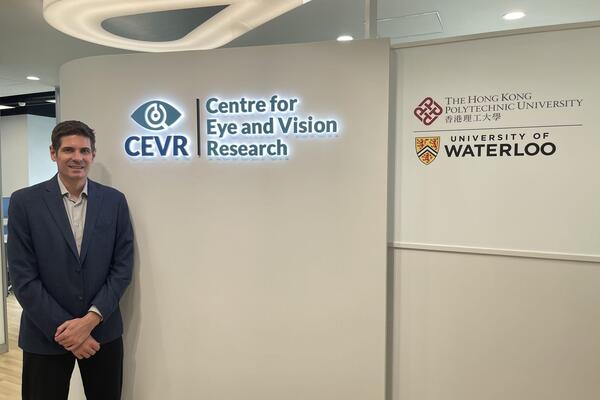
Making an impact on more than just dinosaurs
Co-op work terms fueled a passion for an Environmental Science graduand

Co-op work terms fueled a passion for an Environmental Science graduand
By Sharon McFarlane Faculty of ScienceIt’s fair to say that Sana Ahmad (BSc ’22) was always planning on attending the University of Waterloo. Afterall, she practically grew up on campus as a child of two Waterloo alumni from the Faculty of Engineering and saw her older sister also graduate from Engineering in nanotechnology. The only hiccup was the subject matter Ahmad was to study. Although the Cambridge, Ontario native showed an inherent interest in STEM and engineering, Ahmad was really interested in rocks and had accumulated an impressive rock collection early on in life.
“My Mom told me to pursue my passion, so I took a risk,” she says. “I didn’t have the opportunity to learn geology in high school so it was a whole new subject to learn from scratch.”
Ahmad found her first, and arguably favourite, co-op work term at Waterloo’s Earth Sciences Museum. The Museum, founded in 1967, houses a dinosaur and Ice Age mammals exhibit, a simulated mining tunnel, hundreds of gem and rock samples from around the world, an interactive mastodon exhibit and a depth-to-scale fountain of the Great Lakes. An average year will see more than 6,000 children walk amongst the museum’s dinosaurs plus visitors on campus tours and at special events.

Over her four-month work term, Ahmad introduced approximately 2,500 students between the ages of 3 to19 to the wonderous world of earth sciences. As part of the outreach program, Ahmad embraced her teaching duties, often holding 1 to 2 classes a day on the historic era of dinosaurs, rocks and minerals as well as advanced geoscience for older students. “Ahmad is a natural educator,” says Corina McDonald, the curator of the Museum. “She clearly loves what she teaches and it shows. She passes that spark of excitement and curiosity for Earth science on to the children which is what our Museum aims to accomplish.”
Ahmad explored more geoscience opportunities in her other work terms, including performing lab and field work for mine remediation projects in the Groundwater Geochemistry Remediation Group lead by Science professors David Blowes and Carol Ptacek. Another work term had her studying the sedimentary geology of an English castle with Professors John Johnston and Martin Ross. For her last work term, she worked with the Gro-Bark Researchto create optimized custom soils and mulches for greenhouses.
“I really enjoyed the variety of jobs I had,” she says. “Co op allowed me to explore different ways of applying geoscience.”
In the fall, Ahmad will begin her master's degree in geomicrobiology under professor Jenine McCutcheon where she will be studying the role of bacteria in contaminated mine sites and determining ways to counteract the production of acid mine drainage. Until then, she has dedicated her summer to the Earth Sciences Museum and making an impact on the next generation of earth scientists.
“We need more people in the field of geoscience,” she says. “The secret is to get them while they’re young.”

Read more
Meet the ten inspiring individuals representing Waterloo’s newest grads

Read more
Waterloo recognizes six PhD students for earning the highest academic status within their faculty and their innovative research

Read more
Professor Ben Thompson is a member of the award-winning inter-disciplinary research team changing international neonatal hypoglycemia practice
The University of Waterloo acknowledges that much of our work takes place on the traditional territory of the Neutral, Anishinaabeg, and Haudenosaunee peoples. Our main campus is situated on the Haldimand Tract, the land granted to the Six Nations that includes six miles on each side of the Grand River. Our active work toward reconciliation takes place across our campuses through research, learning, teaching, and community building, and is co-ordinated within the Office of Indigenous Relations.